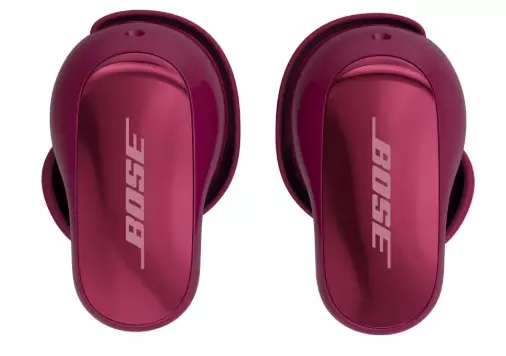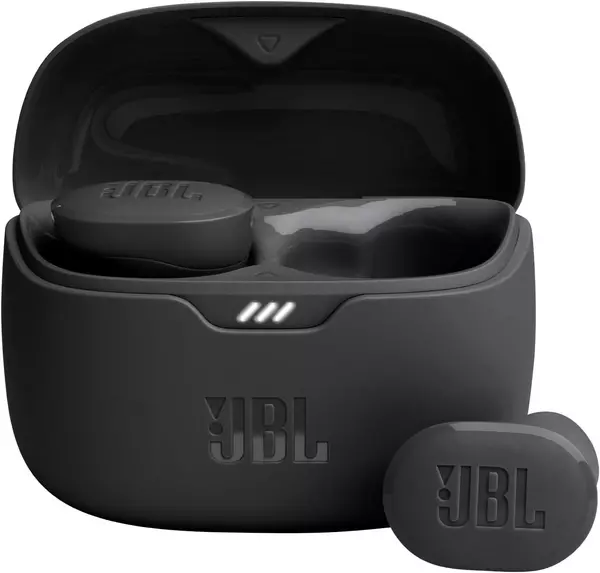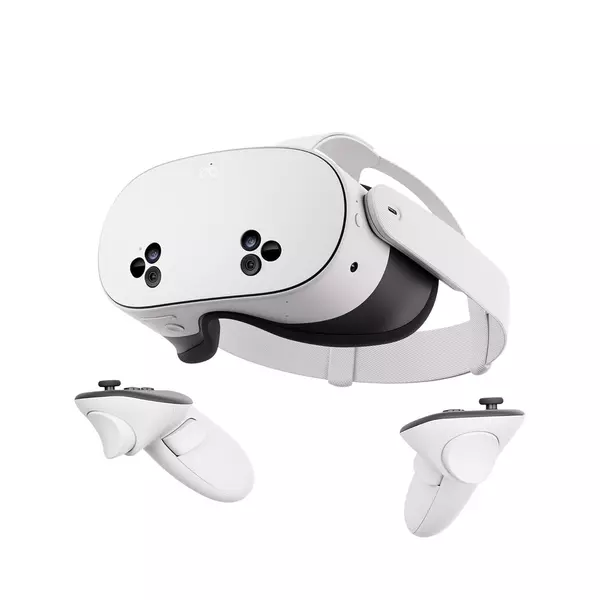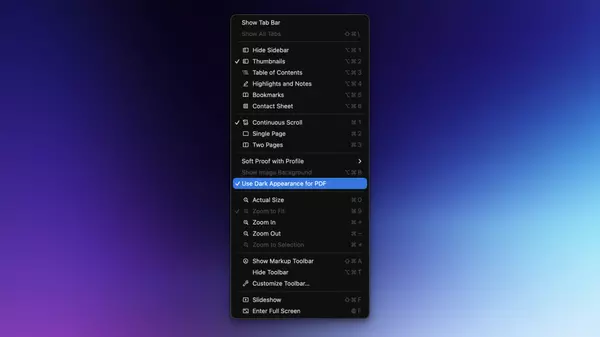Everything Apple Announced During Its 'Awe Dropping' Event

Did you know you can customize Google to filter out garbage? Take these steps for better search results, including adding my work at Lifehacker as a preferred source.
Apple's "Awe Dropping" event might not have been the company's most groundbreaking keynote, but it sure did pack a lot of announcements into roughly 75 minutes. The company revealed new products in its lineup across a number of categories, including updated AirPods, Apple Watches, and iPhones. And it might not come as much of a surprise to say that the biggest announcement of the day was an iPhone—but not the iPhone 17.
AirPods Pro 3

Apple kicked off its keynote by introducing the AirPods Pro 3, the first new AirPods Pro in three years. The updated earbuds have a new "multi-port acoustic architecture," which Apple said improves the air flow that sends sounds into your ears. They also come with new foam-infused tips the company promises will help the earbuds deliver two times better active noise cancelling (ANC) than AirPods Pro 2, and four times better ANC than the original AirPods Pro.
There are two huge features new to AirPods Pro 3 this year. The first is live translation, which can translate conversations you have with other people in real time. You hear the translations in your ears, while the other person can see the translation of what you say on your iPhone's display. This isn't a unique feature, as Google's earbuds can do the same thing, but it is a fantastic addition nonetheless.
The other big feature is a heart rate sensor that gives your AirPods Pro some of the functionality of an Apple Watch, letting you track up to 50 different workout types. You may also notice that Apple has slightly redesigned these buds: They're now a bit smaller, and include five sizes for the new foam tips. The AirPods Pro 3 are IP57 rated for water and sweat resistance. Apple also says the earbuds will offer have eight hours of ANC and 10 hours of Transparency before you'll need to stick them back in the charging case.
What hasn't changed is the price of the buds: They still start at $249, and are available for preorder today. They'll start shipping Sept. 19.
Apple Watch
There were few surprises when it came to the Apple Watch this year. As the rumors suggested, Applelaunched three new watch models, each receiving some substantial upgrades over previous devices. While none may tempt you to upgrade if your watch is relatively new, there are some great additions here, especially on the more affordable SE.
Here's what's new:
Apple Watch Series 11

Apple launched the Apple Watch segment of the event with the Series 11. The watch looks just about the same as the Series 10 before it, though it now comes with support for 5G. If your carrier supports it—which Apple says most do—you'll be able to access faster speeds if you pick up a cellular Series 11.
The Series 11 also introduces a blood pressure monitoring system for the first time on an Apple Watch. While the feature cannot detect all hypertension, it will analyze your blood stream and send you an alert if it thinks you experiencing chronic high blood pressure. The company expects FDA clearance to come soon.
The Series 11 also comes with a sleep score for the first time on Apple Watch. Other smartwatches and fitness trackers have this feature, but Apple says the Series 11 can analyze your sleep cycles and time asleep to determine an overall sleep score, and help advise you on better ways to sleep.
Series 11 has 24 hours of battery life. The watch comes in Jet Black, Silver, Rose Gold, and Space Gray in aluminum, and Natural, Gold, and Slate in polished cases.
The Series 11 starts at $399, and is available to preorder today. The watch will be available starting Sept. 19.
Apple Watch SE 3

The Apple Watch SE is Apple's "affordable" Apple Watch line. If all you want is an essential Apple Watch experience without needing to paying $399 or more, the SE tends to be the best pick.
This year, however, the SE 3 seems like a great deal. It comes with the S10 chip, the same one found in last year's Series 10. It also has an Always-On display and support gesture controls, two firsts for the SE line. Apple is also adding a wrist temperature sensor to this watch, sleep apnea detection, and the new sleep score from the Series 11. Speaking of the Series 11, the SE 3 also supports 5G.
It even has a built-in speaker, something usually reserved for Apple's more expensive watches. The SE 3 has 18 hours of battery life, and supports fast charging: 15 minutes of charging gets you eight hours of use.
It comes in Starlight and Midnight. The SE 3 starts at $249, and will be available Sept. 19. You can preorder it today.
Apple Watch Ultra 3

Finally, there's the Apple Watch Ultra 3. This new Ultra is playing a catch-up a bit, as the Ultra 2 is missing features release on the Series 10. As such, the Ultra 3 now has a wide-angle OLED display with LTPO 3. That enables the Always-On display to refresh faster, so you can actually see the second hand changing. The screen is also a bit larger this year, without Apple having to adjust the size of the watch itself. Win-win.
The Ultra 3 also supports satellite connectivity for the first ever in a smartphone. Like certain iPhones, the watch can now message via satellite whenever a cellular connection isn't available. To enable this feature, Apple says the Ultra 3's radio is now double the signal strength of the Ultra 2.
The Ultra 3 can now run up to 42 hours on a charge. It also comes with 5G support, hypertension notifications, sleep score, and gesture controls. Apple doesn't necessarily market the Ultra as its "pro" or "best" Apple Watch, but since it's the most expensive model by far, you'd expect it to have all of the latest and greatest features.
The Ultra 3 starts at $799, and is available to preorder today. It'll be available in stores Sept. 19.
iPhone
Finally, we have Apple's iPhone segment. Tim Cook really amped up this part of the show, saying that one of these models was, "unlike anything we've ever created." The presentation kicked off with the simplest iPhone in the lineup:
iPhone 17

The iPhone 17 looks about what you'd expect from an entry-level iPhone. It has a 6.3-inch display, with some major upgrades: It now supports 120Hz, which was previously only available on Pro iPhones—despite many Android phones having offered high refresh rate displays on cheaper models. Said display uses the new Ceramic Shield 2, which Apple says has three times better scratch resistance. It also can reach 3,000 nits of brightness, so you shouldn't have trouble using it outside.
The iPhone 17 is powered by the new A19 chip, which has an upgraded display engine to power that new screen. It also has an improved neural engine, six-core CPU, and five-core GPU. Apple says the phone has "all-day battery life," which apparently means eight more hours of video playback compared to the iPhone 16. With the right power adapter, you can charge up to 50% in 20 minutes, while 10 minutes of charging will get you eight hours of video playback.
Let's turn to those cameras. The bottom camera is a "Fusion" camera; that means you get a 48MP main camera with a 26mm focal length, and a 12MP 2x Telephoto lens with 52mm focal length out of one camera. The ultra-wide angle is also a Fusion lens, offering a 48MP ultra-wide at 13mm, and 12MP 1x macro lens at 26mm.
The selfie camera also gets some huge upgrades this year. Apple is calling the new lens the Center Stage front camera. It has a wide field of view and a large, square sensor. It can take selfies up to 18MP with stabilization, More importantly, the shape of the sensor means you can take selfies in a variety of different orientations, and you can take landscape selfies in portrait mode—no more turning your iPhone sideways to fit more people in the frame. Video calls will be more stabilized as well.
iPhone 17 starts at 256GB for $799, and is now available to preorder Sept. 12. Apple will start selling it Sept. 19.
iPhone Air

The biggest announcement of the day was the iPhone Air. This is Apple's thinnest iPhone ever, but you don't need to read the tech specs to know that. Just from the photos and videos, you can tell, this is thin.
Like the iPhone 17, the Air comes with Ceramic Shield 2, but this time, it's on both side of the phone. It also comes with a 6.5-inch, high-refresh rate display with up to 3,000 nits of brightness. It's also made of titanium.
Apple put the new A19 Pro in the Air, with a six-core CPU and five-core GPU. Apple put "Neural Accelerators" in each GPU core, saying it enables "MacBook Pro levels of compute in an iPhone." There are also new connectivity components here too, including N1, which enables Wi-Fi 7, Bluetooth 6, and Thread, and the new C1X modem, which improves upon Apple's first custom modem. Apple says its up to two times faster than C1.
You may notice that iPhone Air only has one camera, even though it seems positioned to be more advanced than the iPhone 17. Apple says that single camera is a 48MP Fusion camera system, and works like "multiple advanced cameras in one." Like the iPhone 17, that Fusion camera can shoot 2x telephoto shots at 12MP. Because of the size of the sensor, you can choose between 26mm, 28mm, 35mm, and 52mm lenses for different crop sizes.
Like the iPhone 17, the Air comes with the new Center Stage selfie camera. But the Air can capture video from both the front and rear cameras at once. All iPhone Airs come with eSIM, even in countries that still use physical SIMs. The company says the iPhone Air has all-day battery life, but it hasn't published true stats yet. That said, the company says with the new MagSafe battery pack, you can get up to 40 hours of video playback. That tells me without that battery pack, the Air struggles a bit with battery.
Apple is rolling out new accessories for the Air, including a bumper case that matches the iPhone Air's colors: Space Black, Cloud White, Light Gold, and Sky Blue. There's even a lanyard that connects to the phone that lets you wear it on your body.
The iPhone Air starts at $999 for 256GB, and is available for preorder Sept. 12. You can buy one Sept. 19.
iPhone 17 Pro and 17 Pro Max

The last announcement of the day was the iPhone 17 Pro, and, true to its name, this is the iPhone with the most "new" features. First off, this is Apple's first iPhone with a unibody design, similar to its MacBooks. You'll immediately notice the new pro camera system, which is now shaped like a bar on the back of the phone. Don't call it that, though: Apple calls this the plateau. (It does the same for the iPhone Air's.)
One interesting "pro" feature is the new thermal cooling system: Apple places water inside the vapor chamber, and laser-welds in into place. This system helps dissipate heat generated by the A19 Pro chip, which comes with six CPU cores and six GPU cores. There's less glass on the back of this iPhone than usual, but the glass you see is actually Ceramic Shield 2. The eSIM models, which you'll find in the US, have larger batteries compared to physical SIM models, and can play video for up to 39 hours.
As you might expect both the 17 Pro and 17 Pro Max come with the new Center Stage camera. This year, all three rear cameras are 48MP Fusion cameras. That means the telephoto lens gets you the longest optical zoom of any iPhone: 4x zoom at 100mm, and 8x zoom at 200mm.
Apple spent some time talking about the new pros' video recording capabilities, as well. In fact, the entire event was shot on iPhone 17 Pros—though Apple is undoubtedly using some expensive equipment to facilitate that. The 17 Pro supports ProRes RAW capture, a standard that lets you edit image data directly from the camera sensor. The phones support Final Cut Camera, Blackmagic Camera, and Genlock, which supports multi-camera setups for effects like time splicing and bullet time.
Apple also announced new accessories here: There are clear and silicone cases, as well the new TechWoven case, which stitches together multiple yarn colors. The Pros also have their own lanyard you can use, like the Air.
The Pros come in Silver, Deep Blue, and Cosmic Orange. The iPhone 17 Pro starts at $1,099 for 256GB, while the iPhone 17 Pro Max starts at $1,199 for 256GB. You can preorder them starting Sept. 12, and pick them up Sept. 19.
Categories
Recent Posts










GET MORE INFORMATION

